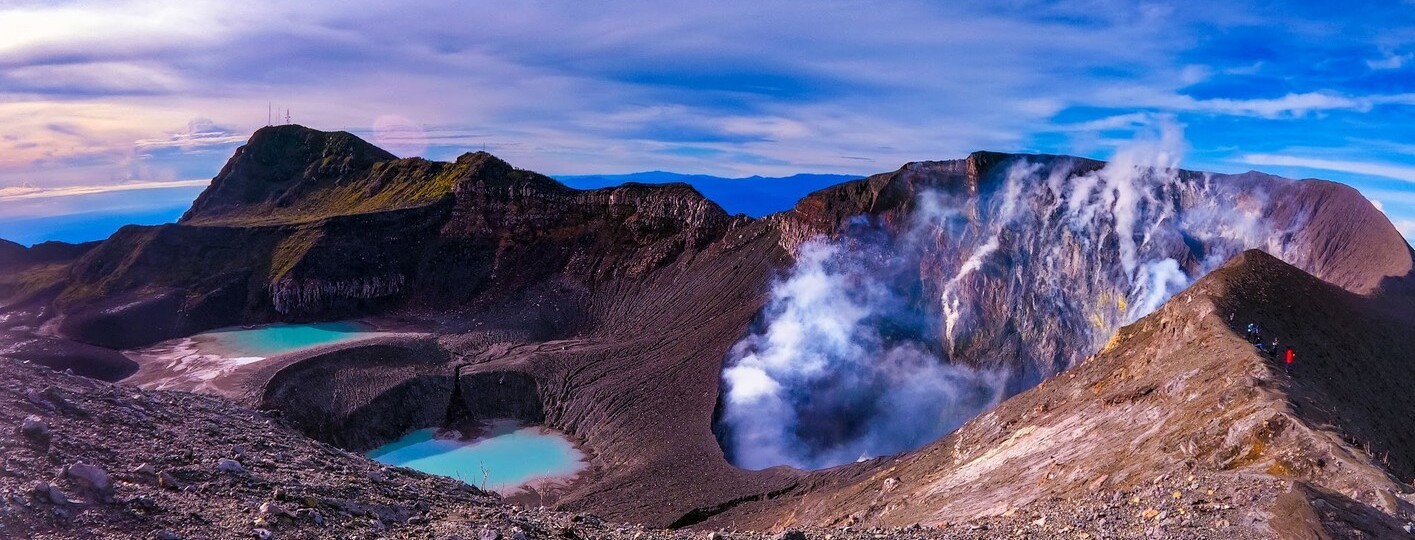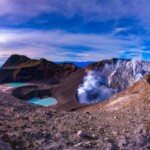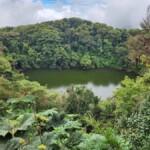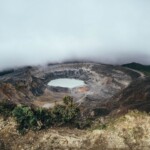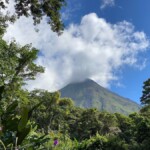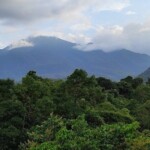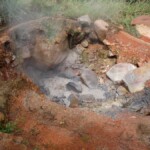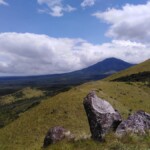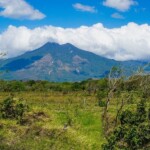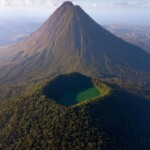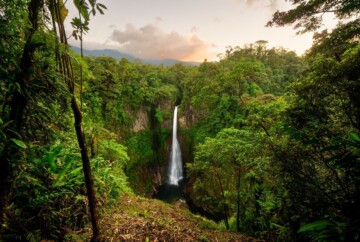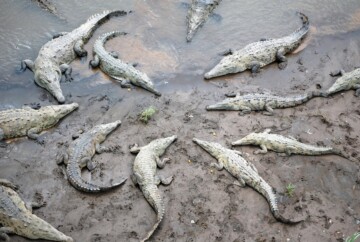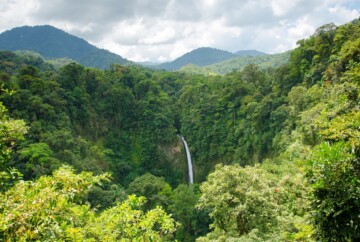When traveling abroad, get a policy from one of the best travel insurance companies. You can get a 5% discount on Heymondo, the only insurance that pays all medical bills upfront for you, HERE!
Costa Rica’s volcanoes are the stars of the show when it comes to the country’s stunning landscapes. Nestled in the heart of the Pacific Ring of Fire, Costa Rica boasts about 60 volcanoes, though only five are currently active, so no need to worry!
Over the centuries, volcanic eruptions in Costa Rica have shaped the land, creating the rich, fertile soil that nourishes the country’s lush greenery as well as the wide range of wildlife. Without the volcanic activity, many of the must-see attractions in Costa Rica simply wouldn’t exist.
In fact, many of the country’s national parks are centered around these volcanoes. These parks offer some of the best eco tours in Costa Rica, along with exciting activities like rafting, kayaking, and soaring down breathtaking zip lines in Costa Rica.
My favorite way to experience these volcanoes is by hiking to the craters for stunning views or relaxing in one of the nearby hot springs. Each volcano has its own unique character, but since it’s impossible to see them all, I’ve curated a list of volcanoes in Costa Rica that you cannot miss. Ready to explore?
1. Poás Volcano, one of the major volcanoes in Costa Rica near San José
The Poás Volcano is one of the most accessible volcanoes to visit from San José, so it’s perfect for a day trip. Fun fact: it’s home to one of the largest geysers in the world and is known for its dramatic eruptions and steamy fumaroles. There’s also an acid lake inside the crater, making it a one-of-a-kind natural wonder.
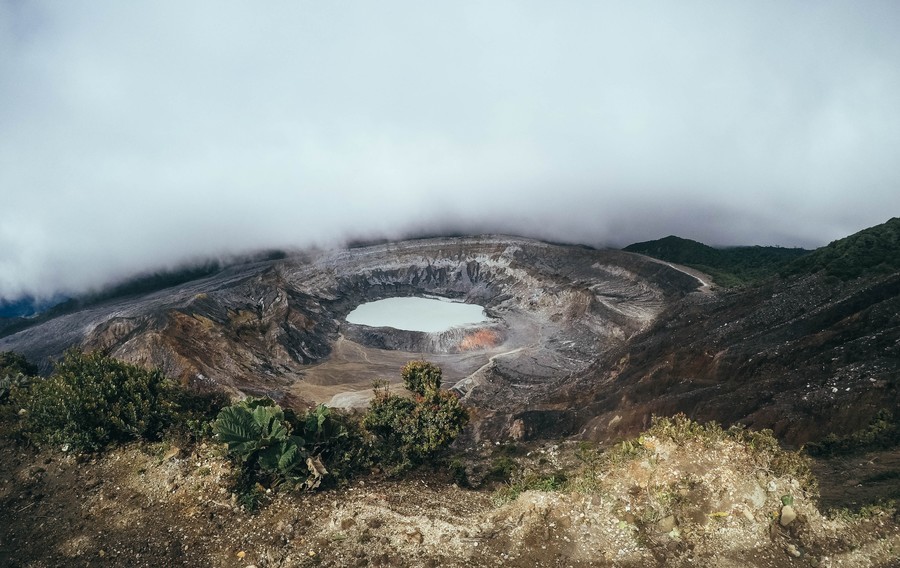
1. Poás Volcano, one of the major volcanoes in Costa Rica near San José
Sitting at 8,850 feet above sea level, it is surrounded by a beautiful cloud forest with walking trails. In our guide to visiting the Poás Volcano, you will find the full information but to reach the crater, you only need to hike 1,650 feet— it’s definitely worth it for the views.
We also visited La Paz Waterfall on the same day by booking this tour. It was an unforgettable experience! If you prefer, you can rent a car in Costa Rica and explore on your own. Either way, the tour we took included a tasty buffet of traditional Costa Rican food and one of the best coffee tours in Costa Rica—so it’s well worth it!
2. Arenal Volcano, the most famous volcano in Costa Rica
The Arenal Volcano is one of the most visited volcanoes in Costa Rica, towering over the town of La Fortuna like something out of a postcard.
If you’re into hiking, Arenal Volcano National Park is one of the best national parks in Costa Rica. It’s split into two sections: the Volcano Sector, where you can walk along three trails that take you through solidified lava flows, and the Peninsula Sector, which offers stunning views of Lake Arenal. I really enjoyed exploring them both since the landscapes are so different and absolutely breathtaking.
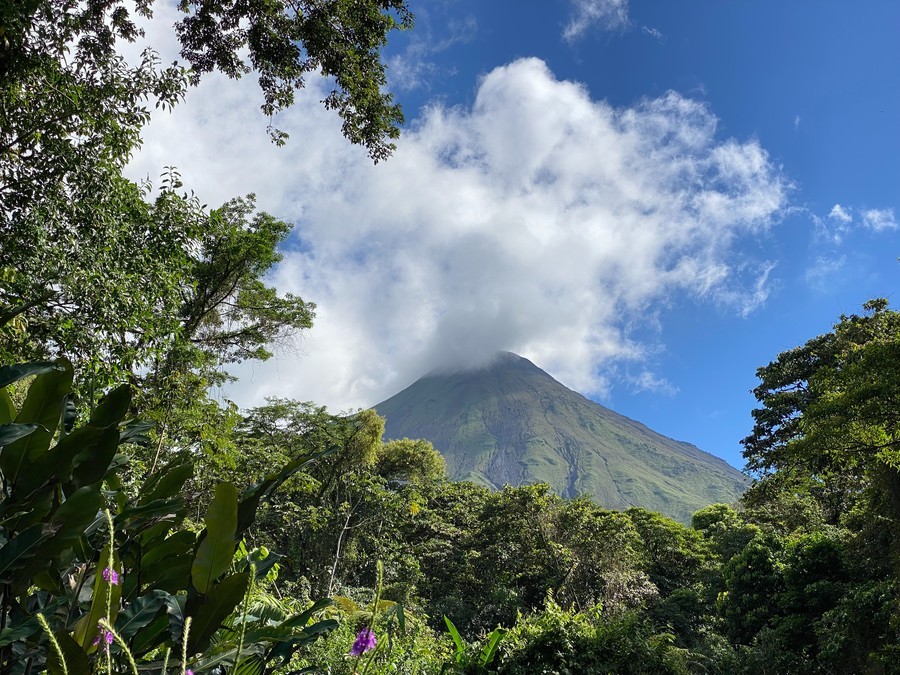
2. Arenal Volcano, the most famous volcano in Costa Rica
Besides the volcano, there are plenty of other attractions in La Fortuna you can visit. One of my favorite spots was La Fortuna Waterfall—hands down one of the most beautiful waterfalls in Costa Rica. To make the most of your time, I recommend this tour, which covers the volcano, the waterfall, and a relaxing visit to the local hot springs—all in one day!
Alternatively, you can opt for this tour, which includes a visit to the hanging bridges at Mistico Park instead of the hot springs. But if you’re planning to go on your own, my Arenal Volcano National Park guide has all the tips you’ll need.
3. Irazú Volcano, a majestic volcano in Costa Rica
The Irazú Volcano is another fantastic volcano in Costa Rica near San José. Just 31 miles from the city, it’s one of the top day trips from San José.
Irazú Volcano National Park is divided into two sections, but the Craters Sector is my favorite. Here, you’ll see five craters, including the main one and Diego de la Haya, which turns into a stunning lake during the rainy season. Irazú is the tallest volcano in Costa Rica, standing at 11,250 feet, so the views from the top are nothing short of spectacular.
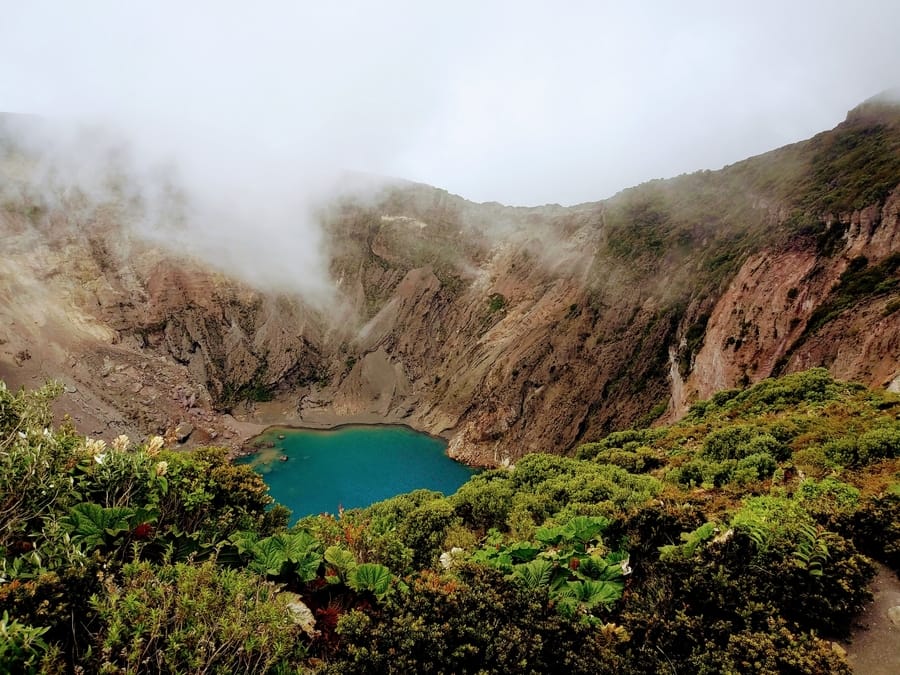
3. Irazú Volcano, a majestic volcano in Costa Rica
The other section, the Prusia sector, has 10 miles of trails through the forest. It’s a great spot for birdwatching in Costa Rica, and if you’re lucky, you might even stumble upon the famous “Haunted Tree” on the Los Abuelos trail.
We booked this tour from San José, which also took us to Cartago, where we saw some beautiful colonial art, and the Orosi Valley, which is full of dreamy landscapes and an old colonial church.
4. Turrialba Volcano, one of the active volcanoes in Costa Rica
If you want to visit an active volcano in Costa Rica, Turrialba is a great choice! Be sure to check the status of the trails ahead of time, as they’re often closed for safety reasons. This has kept tourism low, so if you get the chance to visit, you’ll enjoy a more authentic and peaceful experience compared to the busier spots.
Even though it shares a base with Irazú, Turrialba feels like an untouched tropical paradise, home to 900 species of birds and other wildlife. There are several trails that lead to the top of its three craters, and if you’re lucky enough to go on a clear day, you’ll be rewarded with views of the Caribbean coast.
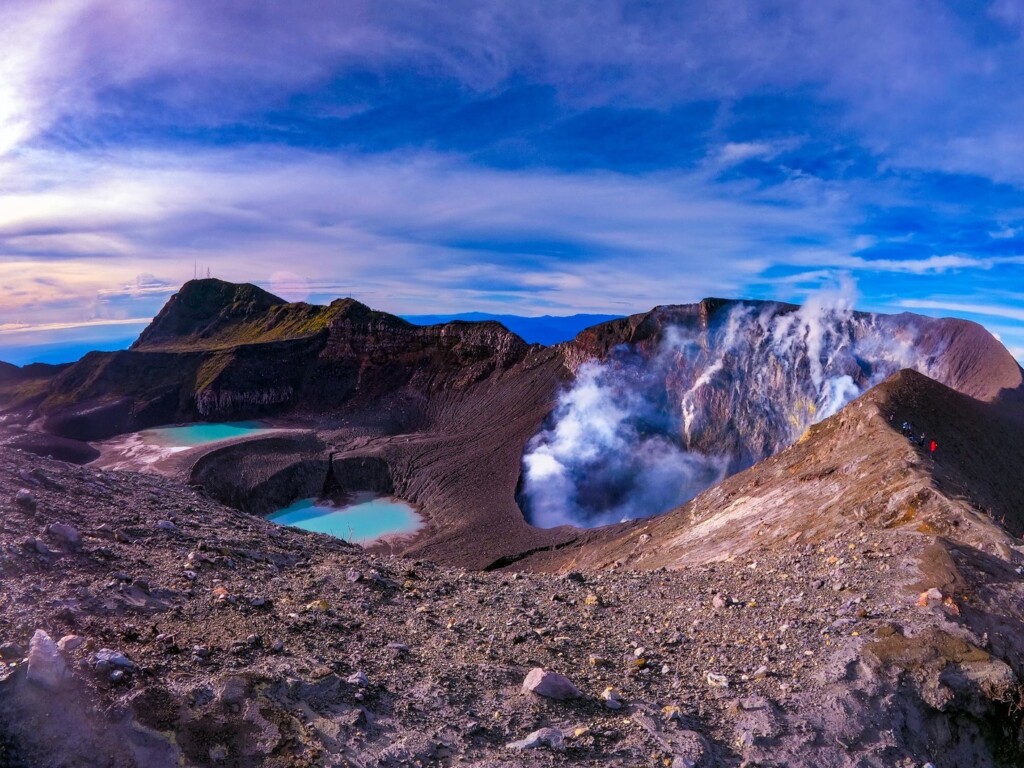
4. Turrialba Volcano, one of the active volcanoes in Costa Rica
Some trails even start from the Guayabo National Monument, an archaeological site on the volcano’s slopes. The nearby town of Turrialba is also known as a popular destination for those who want to enjoy rafting in Costa Rica.
If you don’t have a 4WD vehicle, I recommend booking this tour, which combines a visit to both Irazú and Turrialba in one day.
5. Tenorio Volcano, another must-see Costa Rican volcano
The Tenorio Volcano is another beautiful volcano in Costa Rica that you should add to your itinerary. It’s famous for the Rio Celeste, a river with an otherworldly turquoise color that looks like it’s straight out of a fairy tale.
Standing at almost 100 feet high, the waterfall is accessible via the Tenorio Mysteries Trail. At its base, there’s a vibrant blue pool, but swimming isn’t allowed to help preserve its beauty. However, don’t worry—my Río Celeste guide has some alternatives where you can still enjoy those dreamy turquoise waters.
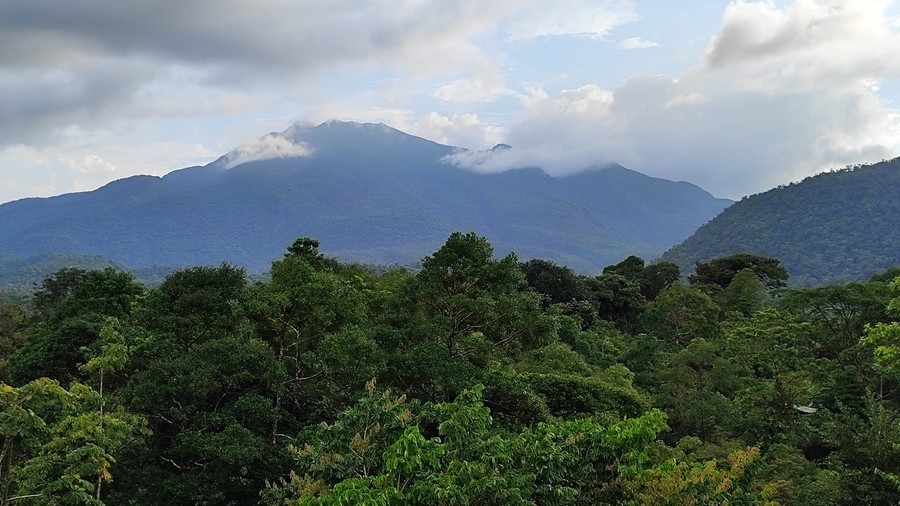
5. Tenorio Volcano, another must-see Costa Rican volcano
Visiting the Río Celeste Waterfall is easily one of the best things to do in Tenorio Volcano National Park. While you can hike to the top of the volcano, the real highlight is the volcanic phenomena on its slopes. Along the trail, you’ll stumble upon steaming fumaroles and the Borbollones, where gases trapped underground cause the water to bubble like it’s boiling. There’s even a scenic lookout where you can get a great view of the volcano.
The wildlife here is just as impressive. We didn’t even have a guide and still spotted a curious coati and a snake. However, if you go with a local guide, you’re likely to see even more. I’ve heard great things about this full-day tour from La Fortuna that covers the area’s highlights.
6. Rincon de la Vieja Volcano, another active volcano in Costa Rica
The Rincón de la Vieja Volcano is one of the major volcanoes in Costa Rica and a top tourist attraction in Guanacaste. It’s located in Rincón de la Vieja National Park, a place where you can really experience the volcanic nature of the country.
While many of the trails are open, the crater itself is off-limits because it’s one of the active volcanoes in Costa Rica. But there’s still plenty to explore, like natural Costa Rican hot springs, beautiful waterfalls, and geysers.
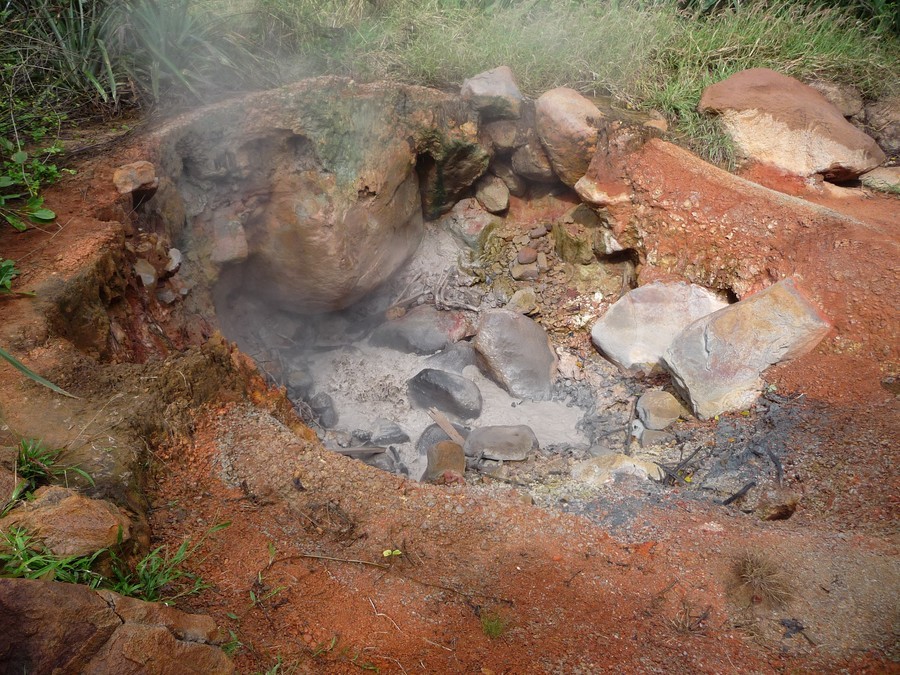
6. Rincon de la Vieja Volcano, another active volcano in Costa Rica
The park is split into two sections: Santa María and Las Pailas. Keep in mind that although you can enter both using the same ticket, they’re about a 30-minute drive apart.
In Las Pailas, I suggest walking the 1.8-mile loop trail, where you’ll see bubbling volcanic mud pools, hot springs, and even a mini volcano. If you’ve got some energy left, head to the Oropéndola Waterfall, or if you’re feeling ambitious, push on to the Escondida or La Cangreja Waterfalls—but start early!
In the Santa María sector, you’ll find more hot springs, the historic Santa María mansion, and a waterfall tucked away in the Enchanted Forest. If you prefer to visit with a guide, you can book this full-day tour.
7. Barva Volcano, a volcano in Costa Rica ideal for sustainable tourism
The Barva Volcano rises to 9,500 feet within Braulio Carrillo National Park, one of the largest protected areas in Costa Rica. Unlike other national parks, Braulio Carrillo doesn’t see as many tourists, so I highly recommend it to those looking for a quieter experience.
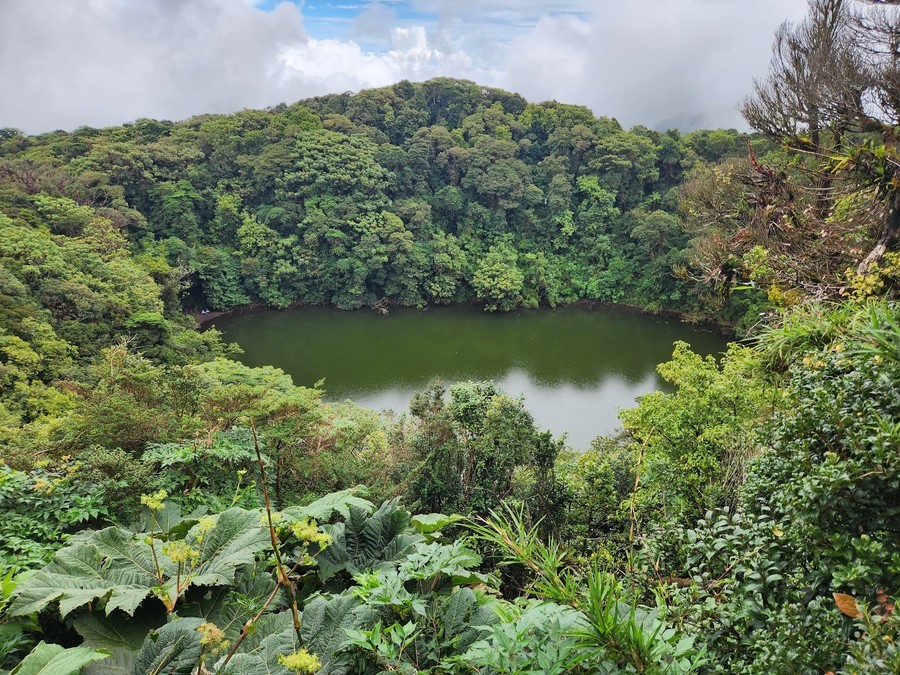
7. Barva Volcano, a volcano in Costa Rica ideal for sustainable tourism
While it’s only about 18.5 miles from San José, getting there isn’t easy—the road is rough, and you’ll need a 4WD vehicle. But trust me, the effort is worth it. You’ll be rewarded with an incredible cloud forest brimming with biodiversity. The landscape is a mix of mountains, forests, and canyons, with trails that wind through some of the most pristine nature in Costa Rica. Over 6,000 plant species have been recorded here, and you might spot tapirs, peccaries, pumas, or even jaguars!
The trail to the volcano’s crater is 1.8 miles long, taking about two hours round-trip. At the top, you’ll discover two extinct craters and three green lagoons— I cannot even put into words how beautiful this place was. And if you’ve still got some energy left, continue along the trail to Laguna Copey, where you’ll find scenic viewpoints and a chance to spot Costa Rican monkeys like white-faced capuchins and howlers.
8. Orosí Volcano, another impressive Costa Rican volcano
The name Orosí Volcano might make you think of the charming Orosí Valley near Cartago, known for its picturesque villages and historic churches. But this Costa Rican volcano is actually located in the north of the country, in Guanacaste National Park, and it flies under the radar for most visitors.
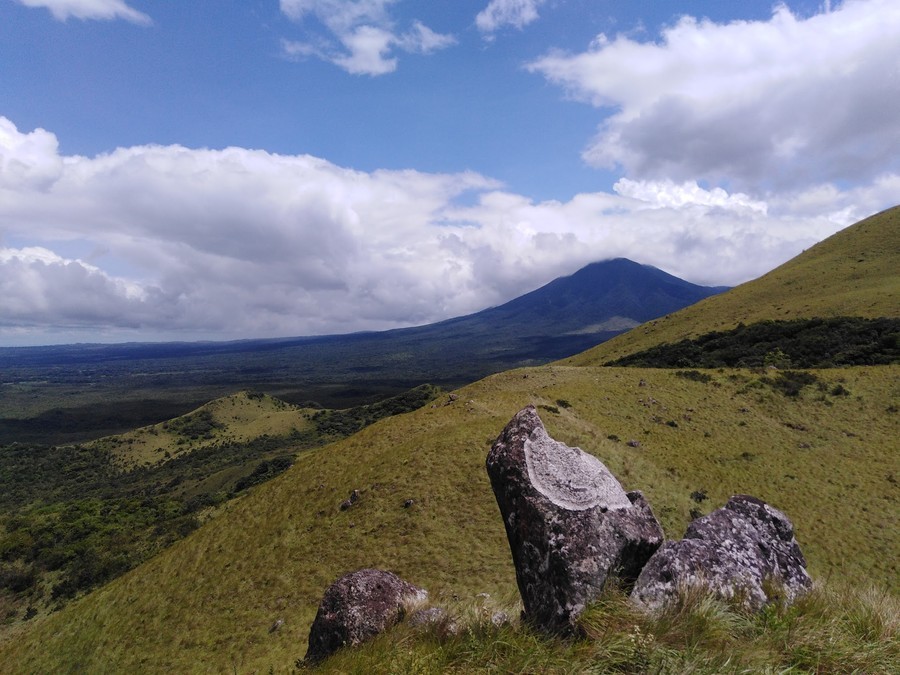
8. Orosí Volcano, another impressive Costa Rican volcano
What makes Orosí special is that there are no official trails to its summit. However, there are plenty of rural roads around the volcano where you can enjoy the volcanic scenery, spot wildlife, and appreciate the natural beauty of the area.
If you’re determined to reach the crater, there’s an unmarked trail that begins at the Maritza Station. It’s not the easiest to navigate, so make sure you bring a good map to avoid getting lost. The hike will take you 4 to 5 hours, but the reward is worth it—amazing views of the surrounding cloud forest, Cacao Volcano, and Cerro Villa Alta.
9. Miravalles Volcano, the highest volcano in Costa Rica in the Guanacaste Mountain Range
The Miravalles Volcano is another must-see volcano in Costa Rica, but only a few lucky adventurers make it to the summit. At 6,650 feet, it’s the highest point in the Guanacaste Mountain Range, and the climb is no joke! With the help of a guide and some solid physical preparation, though, you can reach the top and take in the incredible views.
But don’t worry if scaling a volcano isn’t your thing—there’s still plenty to do nearby. Just be aware that the roads in this area can be pretty rough, especially after rain. If you don’t have a 4WD vehicle, this guided tour is a great alternative, taking you to all the best spots without the hassle.
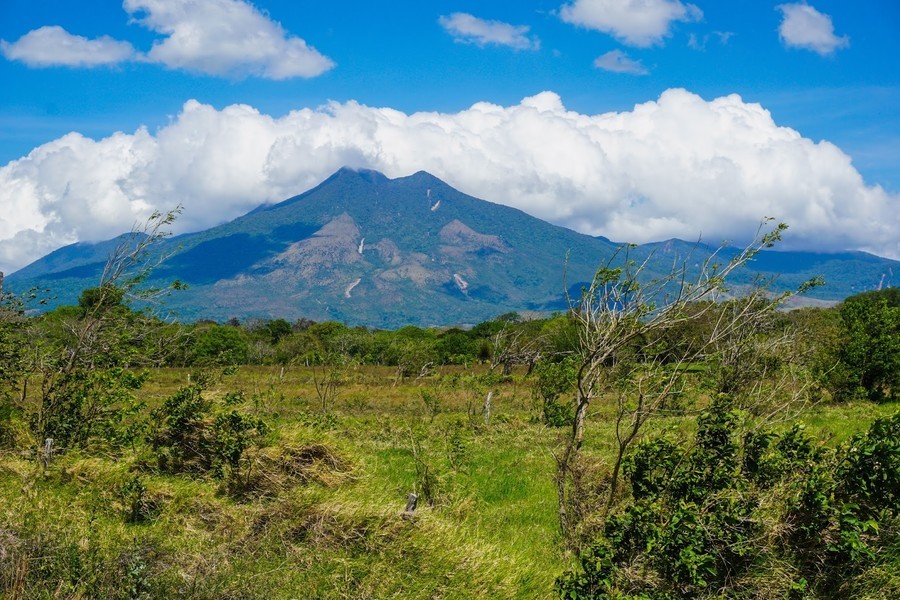
9. Miravalles Volcano, the highest volcano in Costa Rica in the Guanacaste Mountain Range
On the tour, you’ll walk through a stunning tropical rainforest and walk across the crater of the volcano, something you can only do at Miravalles. Your guide will also fill you in on how geothermal hot springs in the crater create mineral-rich natural mud baths you can soak in.
To top it all off, you’ll enjoy a hike past an amazing waterfall and along a series of hanging bridges, where you can admire the forest canopy from a different perspective.
10. Chato Volcano, a volcano in Costa Rica with unique landscapes
When it comes to Costa Rica’s volcanoes, the Chato Volcano doesn’t usually top the list —but it should! It’s next to the Arenal Volcano, and reaching the summit is challenging but well worth the effort. You’ll need to be in good shape and hire a guide who knows the trails, but once you reach the crater, you’ll be rewarded with a refreshing swim in the crater lake.
The hike is tough, with lots of mud and narrow paths through the forest. The hardest part comes toward the end, where you’ll have to conquer a steep 3,300-foot climb. But if you’re up for the challenge, it’s an adventure you won’t forget.
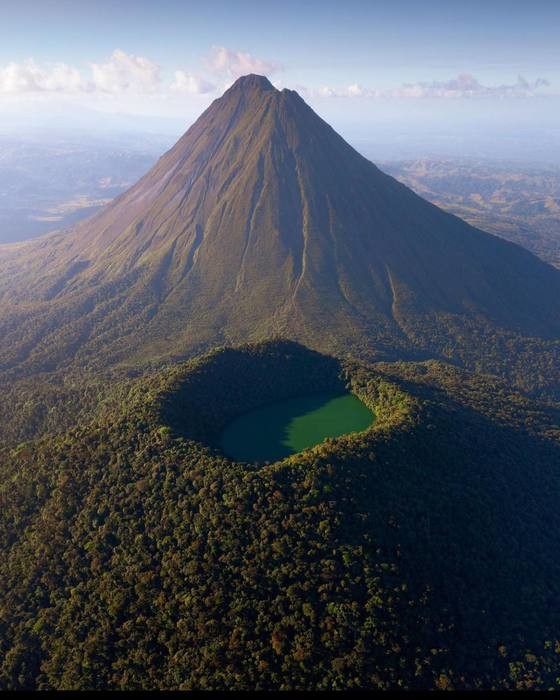
10. Chato Volcano, a volcano in Costa Rica with unique landscapes
To get started, head to the Paradise Mountain Lodge Hotel near La Fortuna to register and pay the $15 entrance fee. The hike takes about six hours, so make sure you bring waterproof gear in case the weather turns.
As you make your way up, keep an eye out for monkeys and birds—it’s a great spot for wildlife watching if you move quietly and don’t scare them away.
Map of volcanoes in Costa Rica
Finally, here’s a map showing the locations of Costa Rica’s volcanoes. You can also take a look at these maps of Costa Rica to plan your itinerary.
And that’s a wrap! I hope this guide helps you explore some of the best volcanoes of Costa Rica. If you have any questions, feel free to drop me a comment below. And if you’ve already visited any of these incredible volcanoes in Costa Rica, I’d love to hear about your experience.
Have a nice trip!
